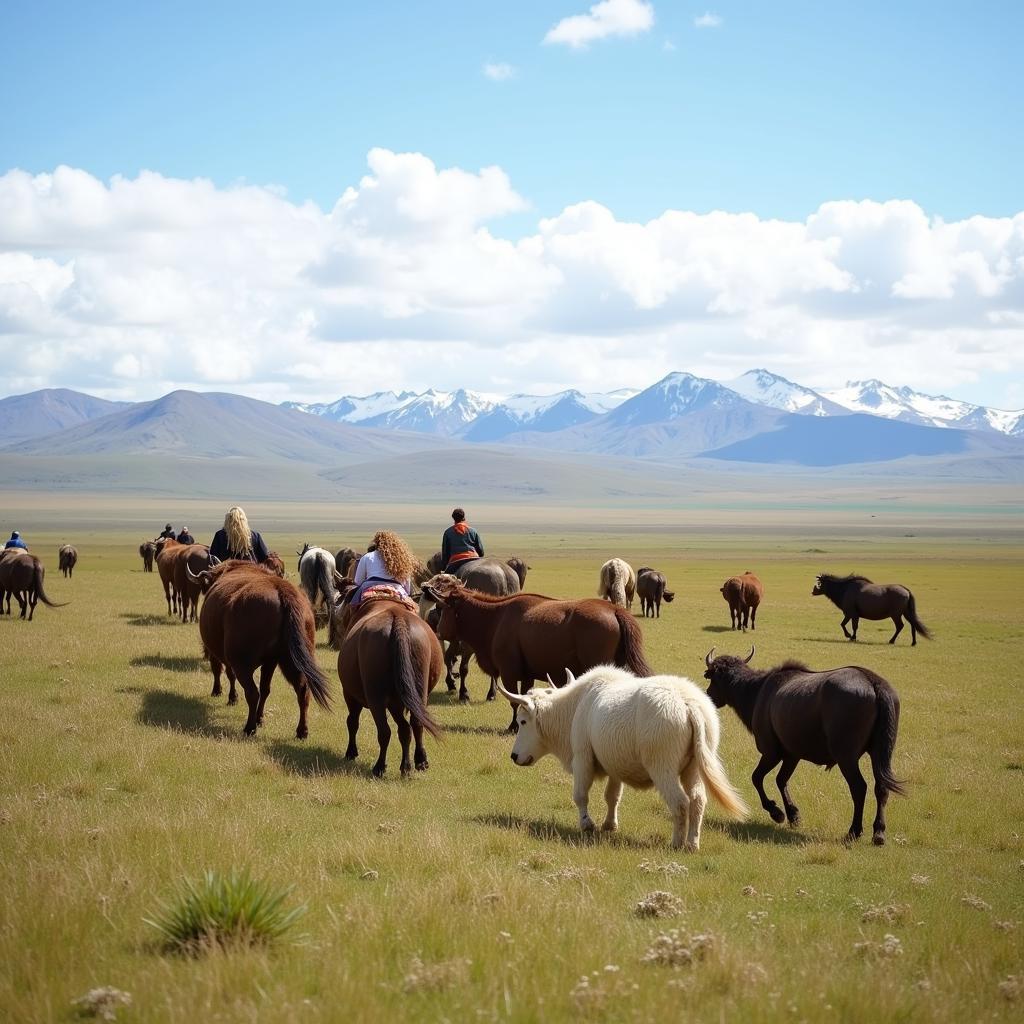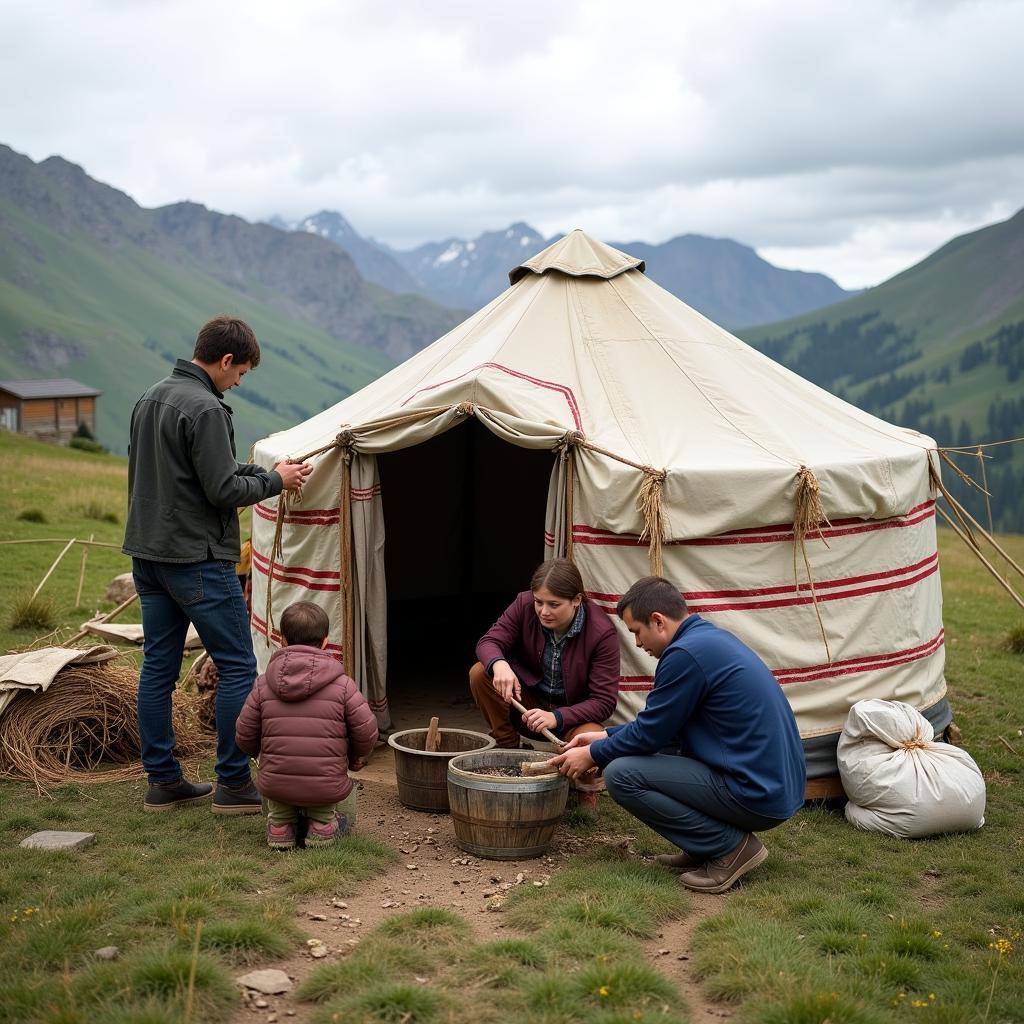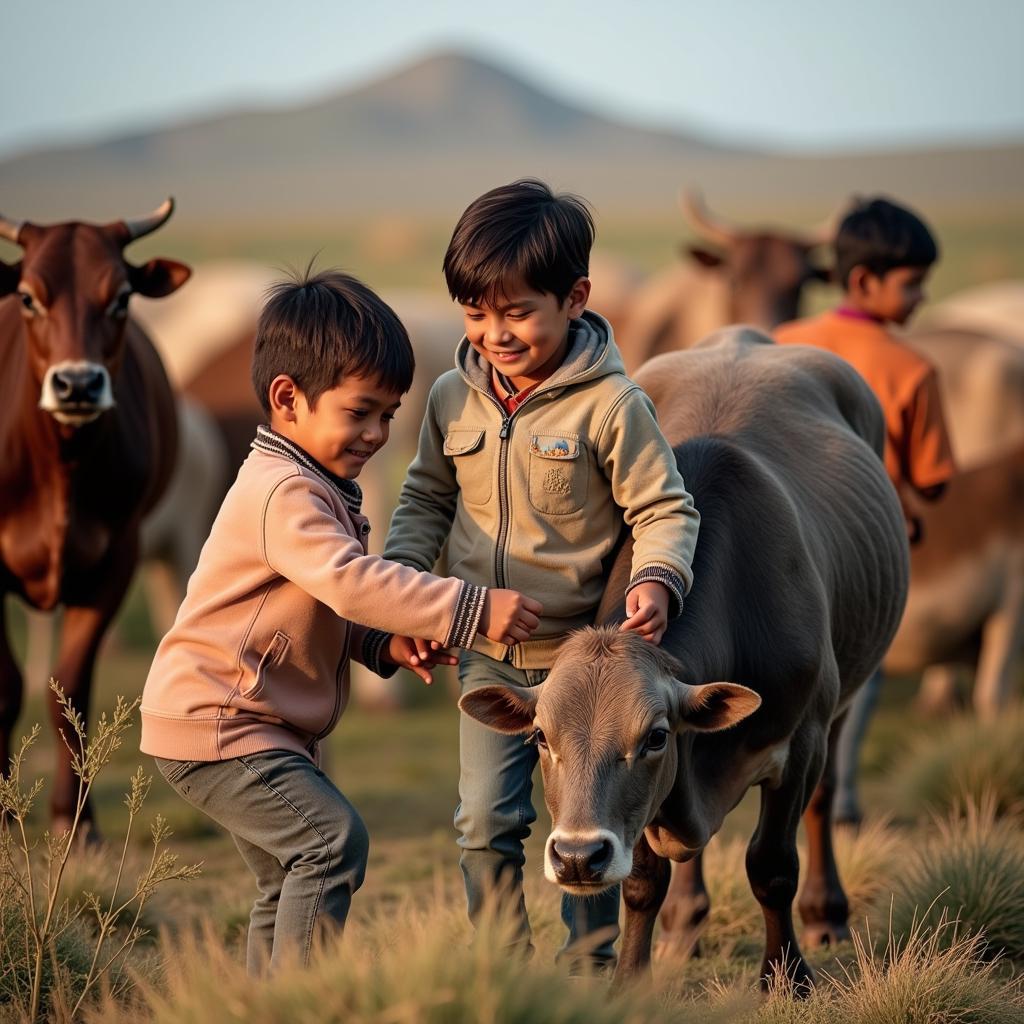Pastoral Societies, often found in regions with limited arable land, represent a fascinating adaptation to challenging environments. These communities, reliant on the herding of domesticated animals, offer a unique lens through which to view human relationships with nature, social structures, and cultural expressions.
 Pastoral Nomads in Mongolia
Pastoral Nomads in Mongolia
The Heart of Pastoralism: Herding and Mobility
At the core of pastoral societies lies a deep connection with their livestock. These animals, often sheep, goats, cattle, or camels, are more than just a source of food and raw materials; they are integral to the social, economic, and spiritual fabric of these communities. The mobility of pastoral societies is dictated by the needs of their herds, leading to a lifestyle characterized by seasonal migrations and a deep understanding of the natural world.
Adapting to the Environment: Resourcefulness and Resilience
Pastoralists have developed ingenious ways to thrive in environments often perceived as harsh and unforgiving. Their knowledge of water sources, grazing patterns, and weather cycles is unparalleled. This intimate understanding of their surroundings allows them to make the most of scarce resources and adapt to the ever-changing conditions of their environment.
 Pastoral Family Setting Up Camp
Pastoral Family Setting Up Camp
Social Structures and Cultural Expressions: Kinship, Tradition, and Oral Histories
Pastoral societies often feature strong kinship ties and a rich tapestry of traditions. Oral histories, songs, and storytelling play a vital role in preserving their cultural heritage and transmitting knowledge across generations. These forms of expression often reflect their deep connection to the land, their animals, and their history.
The Challenges Faced by Pastoral Societies in a Changing World
Despite their resilience, pastoral societies around the world face mounting challenges. Climate change, land degradation, and socio-economic pressures threaten their traditional way of life. It is crucial to recognize the importance of preserving their cultural heritage and supporting their sustainable development.
 Pastoral Children with Livestock
Pastoral Children with Livestock
Conclusion: Recognizing the Value of Pastoral Societies
Pastoral societies offer invaluable insights into human adaptability, resilience, and the delicate balance between humans and nature. By understanding their unique challenges and contributions, we can foster greater appreciation for their cultural heritage and work towards a future where their traditions and livelihoods can continue to thrive.